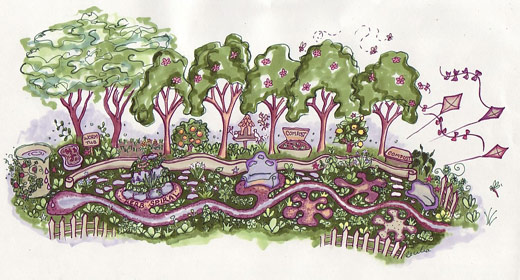by Lorraine Boissoneault: First introduced 150 years ago, the device was meant to prevent accidents—but then it caused one…
he 20-foot monstrosity rose up in the middle of the road, between Bridge Street and Great George Street in London, two arms stretching up during the day, a gas lamp glowing like a gaping maw at night. Built by engineers, designed by a railway manager, and approved by Parliament, the strange contraption had a purpose as serious as its appearance was strange: to protect pedestrians from carriage traffic and keep the streets outside the House of Parliament from filling with congestion. On December 9, 1868, London became the first city to have a traffic light.
The structure would hardly be recognizable today. Compared to the modern lights seen at every corner, this lamp was an architectural spectacle. “Gothic paneling at the base supported a hollow cast-iron pillar, painted green and relieved with gilding, which then evolved into a thick metal coil, encompassed at the top by acanthus leaves which appeared to be growing out of an octagonal box containing the lamps, itself finished off by a pineapple finial,” writes James Winter in London’s Teeming Streets, 1830-1914. Despite its gaudy design, the lamp was a marvel. Newspapers crowed its success. Engineers predicted the arrival of these technological wonders on every street, with an accompanying police officer to operate them. But within a month all excitement had abated; the design proved to have a fatal flaw.
London of the 19th century was a dangerous place for commuters. The medieval city had been constructed along routes following the Thames River, and the Industrial Revolution brought more workers and horse carts than had ever before plied the narrow roads. When a hackney coach broke down and caused a traffic jam in the major thoroughfare known as the Strand in 1803, two men and a woman were trapped between coal wagons and crushed to death. In 1811, London Bridge hosted 90,000 pedestrians, 5,500 vehicles and 764 horse riders in a single day. And the flood of people only continued to grow. By 1850, about 27,000 commuters entered the city daily from outside towns, and they represented only a tenth of the total number of workers, most of whom came by foot or omnibus (a large wagon pulled by horses).
“Traffic staggered visitors to the city,” writes Jerry White in London in the Nineteenth Century. “In the West End the noise, for French-American traveler Louis Simond, was ‘a universal hubbub; a sort of uniform grinding and shaking, like that experienced in a great mill with fifty pairs of stones.’”
One tourist commented on a pile-up that included advertising vehicles, hackney coaches, donkey carts, and a cat’s-meat man. Another noted the courtiers sitting in their carriages, dressed in finery and snacking on biscuits as they awaited the end of a long “traffic lock.” According to historian Judith Flanders, “The nature of horse transport meant that some slowdowns were inevitable.” As she writes in The Victorian City: Everyday Life in Dickens’ London, “Plans for improvement were made. And remade. And then remade again.” Meanwhile, an average of three or four people died in street traffic incidents every week.
The lack of traffic regulations only compounded the problem. Every street had different rules for how it should be negotiated, and even then, the rules were rarely obeyed. But railway manager John Peake Knight had a possible solution. Knight had already made a mark when it came to safety on commuter rails. He was the first to order carriages be lit with electricity, and among the first to install pull-bells in cars that would let passengers alert guards to stop the trains. In 1865, he proposed using a semaphore signal for streets in London, modeled off the principle already in use on railway lines. The pillar would include two red arms, lowered when traffic could flow freely, held up to alert drivers to stop and let pedestrians cross.

The idea quickly moved from the Metropolitan Police to the Parliament, and by 1868 was approved. Police commissioner Richard Mayne printed 10,000 pamphlets and distributed them about town, alerting drivers and pedestrians to the new change. The traffic signal would use its semaphore arms during the day, and red and green gas lamps at night, all of it operated by an officer—though whether police officers actually had the authority to restrict drivers in any way was up for debate among the drivers themselves, Flanders notes.
But when the lamp had been erected, drivers seemed surprisingly compliant. “The regular drivers are fairly, and to quite an unexpected extent, amenable to the signals, whether caution or the absolute stop,” noted the Illustrated Times in early 1869. The South London Chronicle reported, “A more difficult crossing-place could scarcely be mentioned, and should the anticipations of the inventor be realized similar structures will no doubt be speedily erected in many other parts of the metropolis.”
Winter notes that the man who brought the lamp to London was particularly ecstatic. “Knight, delighted with his apparent success, was soon predicting that his signal would be appearing at the bottom of Fleet Street and other important junctions.”
But the railway engineer was premature in his excitement. In January, a leaky gas pipe under the pavement allowed the lamp’s hollow tower to fill with gas. The resulting explosions severely burned the face of the constable who had been operating it (some reports claim the man was killed in the explosion). The traffic signal was taken down shortly thereafter and never replaced, possibly due to political inertia or the police commissioner’s retirement, Winter writes.
London continued to struggle with its traffic issue for decades. A treatise on how to improve traffic in 1871 noted that even if such rules were applied, no one would comply. It would be more than half a century before traffic signals returned to London again. As the city grew and motor vehicles arrived, so too did a new, electric form of stoplight. By 1925 police-operated traffic signals had returned, and in 1926 the first automated light appeared. But however much safer and more effective the new apparatus was, it could never quite live up to the flamboyant style of London’s first traffic light.










































